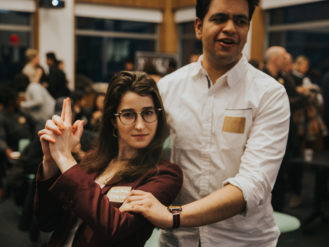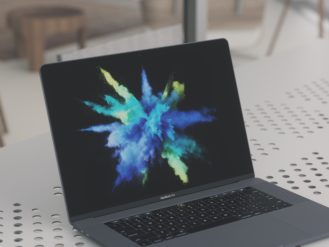Why Those LinkNYC Kiosks Keep Getting More Interesting
From super-fast Wi-Fi to free local ads for small business, the boards are making themselves useful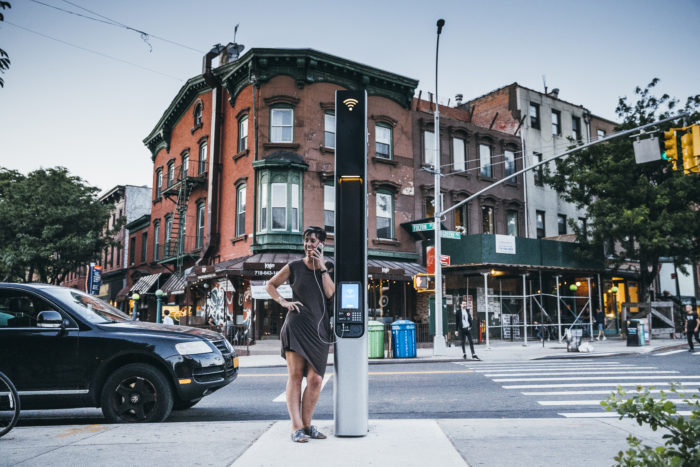
On a Brooklyn street, a pedestrian takes advantage of such features as free device charging (Photo courtesy of LinkNYC)
Too bright, too loud, and maybe even spying on us. Those were some of the wary reactions of New Yorkers when the first LinkNYC booths started arriving in the city two years ago, part of a sweeping plan to replace old pay phones with 7,500 kiosks offering super-fast Wi-Fi and other digital services.
Judging by the volume of usage at more than 1,600 kiosks installed so far, however, New Yorkers have started to embrace them as communications hubs. “Since launching, we’ve already had more than 4 million people connect to our Wi-Fi, which is larger than the population of Chicago,” says Ruth Fasoldt, director of external affairs at LinkNYC. “We also offer free phone calls anywhere within the U.S., map functions on our tablets, access to 311, a 911 button, USB phone charging … we do all of this and it’s all paid for by the advertising on the sides of the links,” Fasoldt added.
In 2018 so far, Brooklynites have made more than 200,000 phone calls on the 236 kiosks installed in the borough so far. The most popular kiosk in Brooklyn, in terms of the number of people connecting to the Wi-Fi, has been one on Atlantic Avenue near Barclays Center. That Link, in the month of April, had more than 50,000 devices connect to it, while people across all of Brooklyn spent 32.9 million minutes on the system’s Wi-Fi.
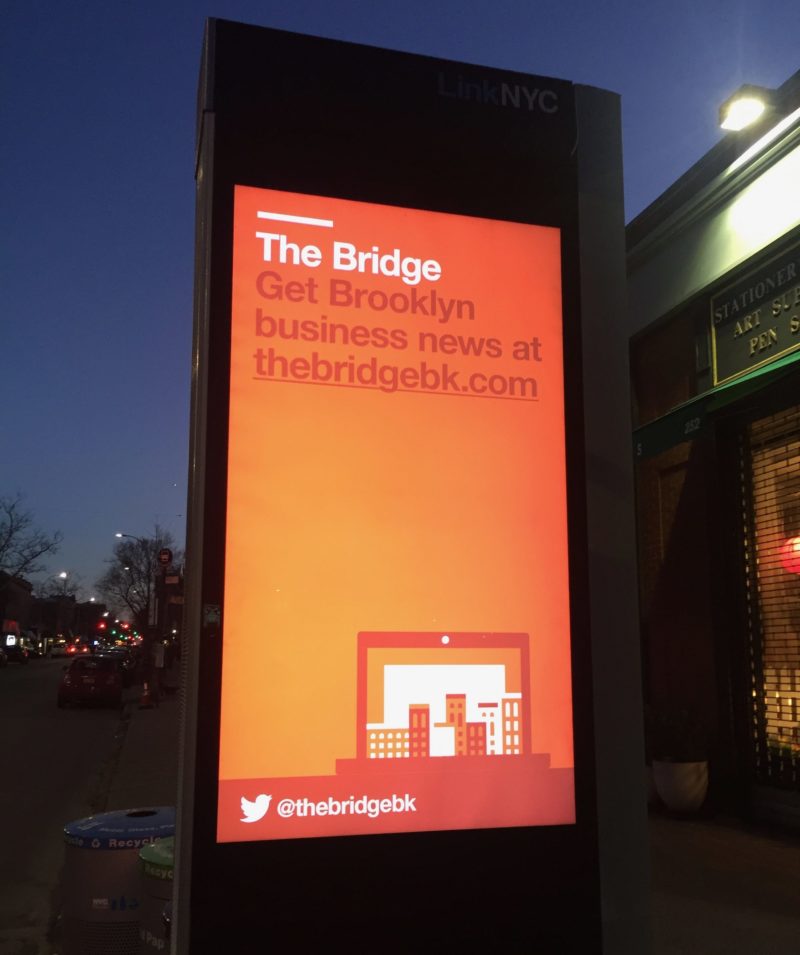
We tried it for ourselves: LinkLocal is a free ad program for small businesses and organizations (Photo by Steve Koepp)
LinkNYC is constantly developing new programming for the eye-catching, 55-inch digital displays on both sides of the boards. Today LinkNYC and the city’s Department of Information Technology and Telecommunications (DoITT) launched a collaboration with local artists to celebrate “life, beauty, and culture in New York City.” One of the artists involved, Julia Rothman of Brooklyn, said she’s thrilled to see her art pop up all over the city. “I really like that they only appear for a short time on the screen before it flips to the next image, so it feels like you caught a quick glimpse of something special,” Rothman said in a press release announcing the program.
Local small businesses and organizations can take advantage of LinkNYC kiosks as well by signing up for a free advertising program called LinkLocal. By filling out a template online, users can request a month of rotating display time on two kiosks of their choice.
Earlier this year, the City Council partnered with LinkNYC to launch Participatory Budgeting on the kiosks, enabling citizens another conduit for casting votes on how the city spends $1 million of the public budget. Anyone who lived in a participating district could approach a Link in any neighborhood and vote on the kiosk’s tablet.
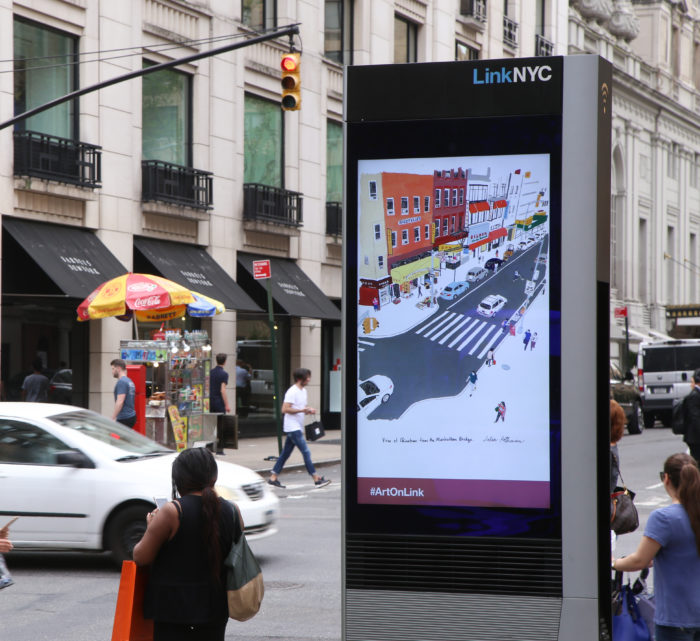
In a program announced this week, artists including Brooklyn’s Julia Rothman will have their work displayed on the big screens
LinkNYC, the largest network of its kind in the world, got its start in 2014 when the de Blasio Administration put out a call for proposals to repurpose the city’s payphone infrastructure. “New York knew that they had thousands of pay phones throughout the five boroughs sitting on prime real estate, not really being used by New Yorkers anymore,” says Fasoldt. “So they wanted to find a way to really improve New Yorkers’ lives and make this a part of their smart-cities initiative,” which involves deploying technology to make the city a better place.
The 12-year franchise was awarded to CityBridge, a consortium of experts in tech, media, and connectivity. CityBridge, which includes major tech companies like Qualcomm, is investing $200 million to install new fiber-optic cable for the Links, each of which can support hundreds of Wi-Fi users simultaneously.
However, initial ad revenues have been underwhelming. “Over the first two years of the program, the city collected just shy of $43.4 million in payments, narrowly beating the $42.5 million minimum it was guaranteed,” the New York Post reported this month. Part of the problem has been a slower-than-expected rollout because of infrastructure problems encountered along the way. As a result, the administration plans to let CityBridge defer profit-sharing payments in order to allow the consortium to invest more money in the program and get the buildout completed.
As the hardware gets installed, LinkNYC keeps developing new content for the boards, ranging from poetry-month features to “This Day in New York” historical facts. Says Stephanie Raphael, director of communications for the city’s DoITT: “We’re really excited about it. It just shows how Link is a very powerful tool for community engagement. You’ll see more and more programs being rolled out.”





